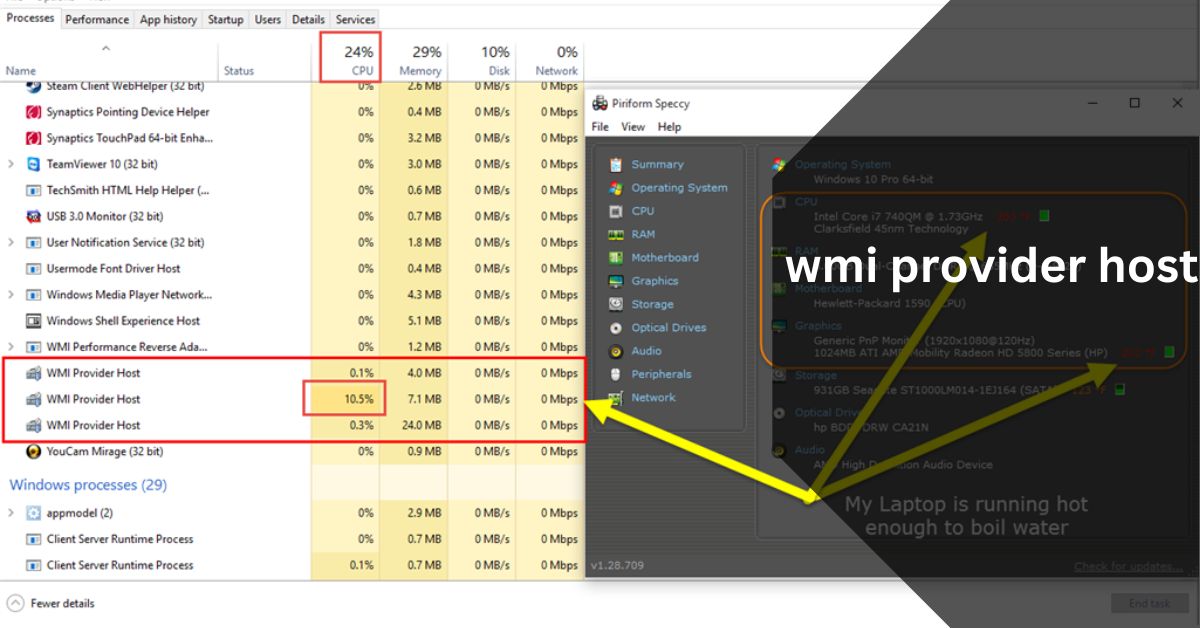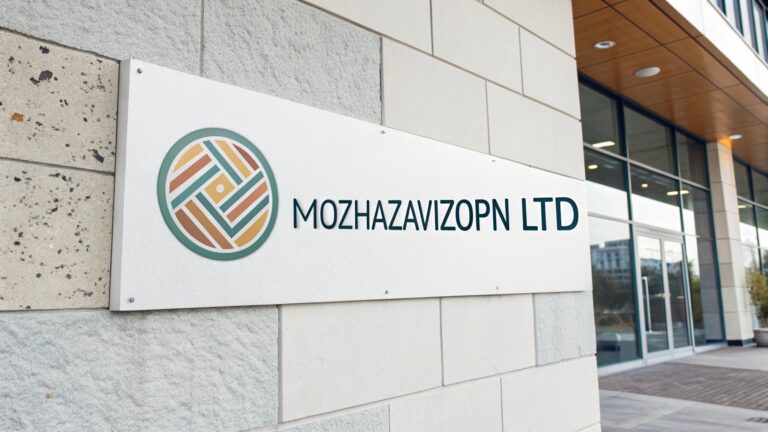In the realm of Windows operating systems, the Windows Management Instrumentation (WMI) plays a crucial role in system administration, monitoring, and troubleshooting. One of the key components of WMI is the WMI Provider Host.
In this article, we will delve into what WMI Provider Host is, its functions, significance, and how it impacts the overall performance of a Windows system.
What is WMI Provider Host?
The WMI Provider Host, also known as WmiPrvSE.exe, is a vital system process in Windows that facilitates communication between WMI clients (such as administrative scripts, management tools, and applications) and the WMI infrastructure. It acts as a mediator, enabling access to management information and control over the Windows operating system and other components.
Functions of WMI Provider Host:
Data Collection and Reporting:
WMI Provider Host gathers information about system resources, hardware components, software configurations, and other relevant data, providing a comprehensive view of the system’s status.
System Monitoring:
It continuously monitors various aspects of the system’s performance, including CPU usage, memory utilization, disk activity, and network traffic.
Configuration Management:
WMI Provider Host allows administrators to remotely configure system settings, manage user accounts, install software, and perform other administrative tasks on multiple networked computers.
Event Notification:
It provides real-time notifications about system events, errors, warnings, and other critical incidents, enabling administrators to respond promptly to potential issues.
Scripting Support:
WMI Provider Host offers extensive support for scripting languages like PowerShell and VBScript, allowing administrators to automate repetitive tasks, perform complex system operations, and develop custom management solutions.
Significance of WMI Provider Host:
The significance of WMI Provider Host lies in its role as a cornerstone of Windows system management and administration.
It provides a standardized interface for accessing and controlling system resources, making it easier for administrators to monitor and manage large-scale IT environments.
Without WMI Provider Host, many system administration tasks would require manual intervention, resulting in increased complexity, time consumption, and potential for errors.
Impact on System Performance:
While WMI Provider Host is essential for system management, it can also impact system performance under certain conditions.
Excessive CPU or memory usage by WmiPrvSE.exe may occur due to inefficient WMI queries, resource-intensive monitoring activities, or conflicts with third-party software.
High resource utilization by WMI Provider Host can lead to sluggish system performance, unresponsiveness, and even system crashes.
Managing WMI Provider Host:
To optimize system performance and mitigate potential issues related to WMI Provider Host, administrators can take several proactive measures:
Optimize WMI Queries:
Ensure that WMI queries are targeted and efficient, minimizing unnecessary resource consumption.
Monitor Resource Usage:
Regularly monitor the resource usage of WmiPrvSE.exe using system monitoring tools or Task Manager.
Update Drivers and Software:
Keep system drivers and software up-to-date to prevent compatibility issues that may affect WMI Provider Host.
Limit Third-Party Interference:
Identify and resolve conflicts with third-party applications or services that may impact WMI Provider Host performance.
Restart WMI Service:
If WMI Provider Host becomes unresponsive or exhibits abnormal behavior, restarting the WMI service may help restore normal functionality.
Troubleshooting Common Issues with WMI Provider Host:
When dealing with WMI Provider Host-related issues, it’s essential to troubleshoot common problems effectively. This section will explore some prevalent issues such as high CPU or memory usage by WmiPrvSE.exe, errors with WMI queries, and connectivity issues between WMI clients and the WMI infrastructure.
We’ll discuss troubleshooting steps like restarting the WMI service, repairing corrupted WMI repositories, and analyzing event logs for error messages related to WMI Provider Host. By systematically diagnosing and addressing these issues, administrators can restore normal operation and maintain system stability.
Security Considerations for WMI Provider Host:
As WMI Provider Host facilitates access to sensitive system information and management capabilities, ensuring its security is paramount.
This section will delve into security considerations such as access control, authentication mechanisms, and encryption for WMI communication.
We’ll discuss best practices for securing WMI Provider Host, including configuring proper permissions for WMI namespaces, using strong authentication methods like Kerberos or NTLM, and implementing firewall rules to restrict access to WMI ports.
By adhering to these security measures, organizations can prevent unauthorized access to critical system resources and mitigate potential security risks associated with WMI Provider Host.
Optimizing Performance of WMI Provider Host:
To maximize the efficiency and performance of WMI Provider Host, administrators can implement various optimization techniques.
This section will cover strategies such as optimizing WMI queries for speed and efficiency, reducing the frequency of polling for system data, and implementing caching mechanisms to store frequently accessed information.
We’ll also discuss techniques for minimizing resource usage by WmiPrvSE.exe, such as limiting the number of concurrent WMI queries and configuring WMI filters to narrow down the scope of monitoring activities.
By optimizing the performance of WMI Provider Host, organizations can improve system responsiveness, reduce resource overhead, and enhance overall system efficiency.
Advanced Management Tasks with WMI Provider Host:
Beyond basic system monitoring and administration, WMI Provider Host offers advanced management capabilities that empower administrators to perform complex tasks efficiently.
This section will explore advanced management tasks such as remote software deployment, system configuration management, and event-driven automation using WMI events.
We’ll discuss practical examples and use cases, such as deploying software packages to multiple computers simultaneously, remotely modifying registry settings, and triggering automated actions based on specific system events.
By harnessing these advanced features of WMI Provider Host, administrators can streamline management workflows, increase operational efficiency, and maintain a high level of control over their Windows environment.
Monitoring WMI Provider Host Performance Metrics:
Monitoring the performance metrics of WMI Provider Host is crucial for maintaining system health and optimizing resource utilization. In this section, we will explore the key performance indicators (KPIs) that administrators should monitor, such as CPU usage, memory consumption, disk I/O, and network activity.
We’ll discuss the tools and utilities available for monitoring WmiPrvSE.exe performance, including built-in Windows Performance Monitor (PerfMon), third-party monitoring solutions, and PowerShell scripts.
Additionally, we’ll provide guidance on interpreting performance data, identifying trends or anomalies, and taking proactive measures to address performance bottlenecks or issues. By effectively monitoring WMI Provider Host performance metrics, administrators can ensure the stability, reliability, and optimal operation of their Windows systems.
Conclusion:
In conclusion, WMI Provider Host is a fundamental component of Windows Management Instrumentation, enabling administrators to manage, monitor, and troubleshoot Windows systems effectively.
Understanding its functions, significance, and impact on system performance is essential for ensuring smooth system operation and optimizing administrative workflows in enterprise environments.
By employing best practices for managing WMI Provider Host, administrators can harness its capabilities while minimizing potential drawbacks, thereby enhancing overall system reliability and performance.























+ There are no comments
Add yours